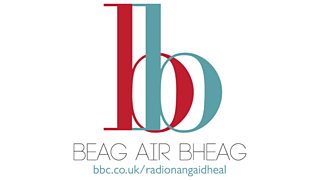Blasad Beag – Episode 22: Prepositional Pronouns
Halò agus fàilte aon uair eile gu Blasad Beag, am pàirt dhen phrògram dhuibhse a tha ag iarraidh Gàidhlig a tha sìmplidh. Welcome back once more to Blasad Beag, where we simplify things and bring you some Gaelic for beginners!

We’re going to learn how to discuss something that belongs to you. There are two ways of saying you have something, or saying that something belongs to someone in Gaelic. I’ll explain them both, but let’s start with the more informal and personal way, using the word bràthair in our example. Bràthair. Brother. Bràthair.
Mo bhràthair. My brother. Mo bhràthair.
Do bhràthair. Your brother. Do bhràthair.
A bhràthair. His brother. A bhràthair.
A bràthair. Her brother. A bràthair. You’ll notice that this is very similar to A bhràthair, “his brother”. However, an ‘h’ is added in to make it A bhràthair, “his brother”, whereas A bràthair, “her brother”, doesn’t lenite. A bhràthair agus a bràthair. His brother and her brother. A bhràthair agus a bràthair.
Ar bràthair. Our brother. Ar bràthair.
Ur bràthair. Your brother, in the plural or polite form. Ur bràthair.
Am bràthair. Their brother. Am bràthair.
Ceart ma-thà. Now, we’ll look at the second way in which you can say that you have, or that someone else has something, or that they own something.
We do this by using the preposition “aig” – meaning “at” in English. In Gaelic, something we have is “at” us. Let’s look at a simple example. We recently learned about the words for various animals in Gaelic. Can you remember how to say you have a dog? “Tha cù agam.” Tha cù agam – I have a dog. Tha cù agam.
The word agam is a prepositional pronoun – in other words, it combines the preposition with the idea of “me.” Agam – literally at me – agam.
Tha cù agam – I have a dog. Tha cù agam.
But if you wanted to say “my dog” you would say “an cù agam”. An cù agam.
So that’s how you talk about your dog. But what about somebody else’s dog?
To say “your dog”, you would say, “an cù agad.” An cù agad. Your dog. An cù agad.
And his dog? An cù aige. His dog. An cù aige.
An cù aice. Her dog. An cù aice.
An cù againn. Our dog. An cù againn.
An cù agaibh. Your dog, in the polite or plural form. An cù agaibh.
An cù aca. Their dog. An cù aca.
One very useful phrase using the word “agam” is “Tha Gàidhlig agam” – I speak Gaelic, tha Gàidhlig agam. In Gaelic, a language is something that you have. Tha Gàidhlig agam – I have Gaelic, I speak Gaelic. Tha Gàidhlig agam.
Glè mhath! Èistibh ri na còmhraidhean a leanas:
Guth 1 (Calum): A bheil cù agad?
Guth 2 (Eilidh): Chan eil, ach tha dà chat agam.
Guth 1 (Alasdair): Hi Lauren. Seo mo phiuthair, Màiri.
Guth 2 (Lauren): Halò a Mhàiri. A bheil Gàidhlig agaibh?
Guth 3 (Màiri): Tha, tha Gàidhlig agam.
Uill, tha mi a’ smaoineachadh gu bheil sibh air gu leòr ionnsachadh an-diugh! I think you’ve learnt enough for today! Mòran taing airson èisteachd ri Blasad Beag, many thanks for listening to Blasad Beag. And for more Gaelic, visit the website, where you’ll find all the learning resources you need. Tìoraidh an-dràsta.

